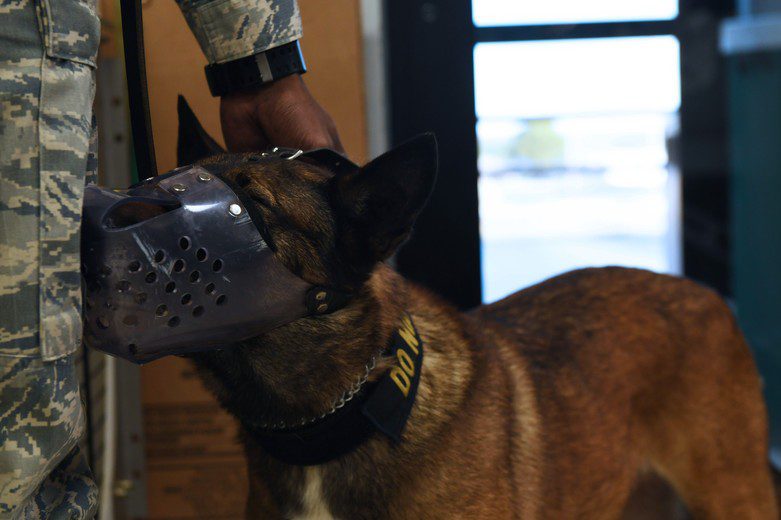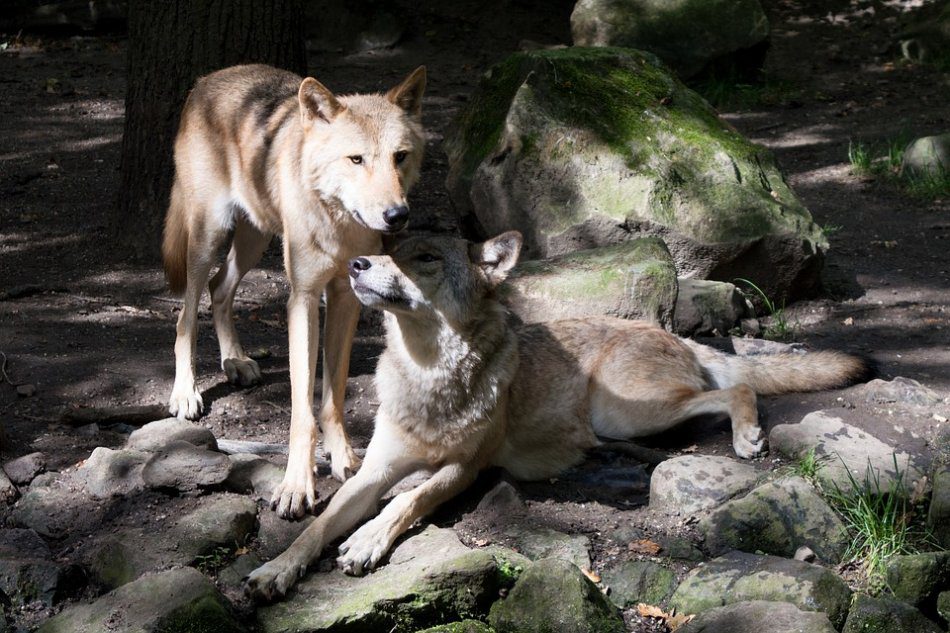
Dominance in Dogs: Does the Alpha Dog Concept Work?
Sometimes one gets the impression that all the talk about obedience and behavioral problems in dogs one way or another slides into the topic “dominance“. Dog owners talk about how they should be the “leader of the pack” and the “alpha dog in their own home.”

Photo: flickr
One of the reasons is that the self-described “dog charmer”, the infamous “trainer” Caesar Millan, goes out of his way to popularize the use of cruel and violent methods to “dominate” naughty dogs.
But does the Alpha Dog concept really work? Modern research calls such ideas into question and speaks of their failure.
Contents
Scientists against
In particular, Millan’s senseless in its cruelty approach criticizes Stanley korean, professor of psychology at the University of British Columbia, PhD., DSc, FRSC, author of many books about dogs (including The Modern Dog, Why Do Dogs Have Wet Noses? The Pawprints of History, How Dogs Think, How To Speak Dog , Why We Love the Dogs We Do, What Do Dogs Know? The Intelligence of Dogs, Why Does My Dog Act That Way? Understanding Dogs for Dummies, Sleep Thieves, The Left-hander Syndrome).
Millan’s methods, says Stanley Coren, do not find support among most dog behaviorists and researchers.
Let’s start with the fact that Caesar Millan proclaimed himself a “dog charmer”, which sounds rather strange. This is a paraphrase of the title “horse whisperer” first used for horse trainers such as Willis J. Powell and Monty Roberts. But they were called “charmers” precisely because they refused to use brute force, which was the accepted way of dealing with difficult and aggressive horses, and developed softer methods! That is, the comparison is clearly not in favor of Millan.
About the techniques that Millan uses, experts, in particular, Jean Donaldson, director of the SPCA Academy for Dog Trainers in San Francisco, put it this way: “Professionalism, which emphasizes humane standards and good practices, was pushed far, far away by this man for the sake of show and making money … Use the word “caster” in combination with using strangleholds, cruel and illiterate methods is completely dishonest and unthinkable.
Jean Donaldson was so upset by Millan’s methods that she, along with Ian Dunbar, a renowned and highly respected dog behaviorist with a veterinary degree and a PhD in psychology, created a DVD called Fighting Dominance in a Dog Whispering World. They completely smashed the methods used by Millan in the popular TV show. Millan’s methods were viciously criticized by other dog behaviorists and trainers.
However, Caesar Millan is too small fry to pay much attention to him, according to Stanley Coren. There is a more fundamental question to consider. For example, does the concept of dominance work at all, and in particular the idea of becoming an “Alpha Dog – Pack Leader”?

Photo: flickr
Konrad Lorenz and the idea of dominance in dogs
Konrad Lorenz, in his book King Solomon’s Ring, published in 1949, describes the difference in the behavior of a dominant and subdominant dog. Lorenz, a Nobel laureate and one of the first animal behaviorists, based his observations on his own dogs. If one dog was more aggressive and domineering (dominant), the other dog recognized its status by showing submissive behavior (subdominant). Lorenz believed that a person also builds a relationship of dominance with a dog, since if he threatened one of the dogs, she showed exactly the same signs of submission towards him.
Of course, no one argues with the invaluable contribution of Konrad Lorenz to ethology. However, there is something else to take into account.
First, Lorenz studied other animals (in particular, gray geese), but did not conduct scientific experiments with dogs – his point of view is based only on observing his own pets.
Secondly, the ideas of scientists usually reflect the culture and beliefs of the historical period in which these scientists live. Lorenz was born in Austria in 1903 – and that says a lot. Konrad Lorenz’s ideas about dogs were influenced by the methods of dog training that were practiced at the time, most of these methods developed by the German military for training service dogs. And the dog training methods at that time reflected the general approaches that existed in the army of that time, which means they were based on the strictest discipline and the use of force with or without reason. Specific tools developed for training in this approach included, for example, the use of leashes with a whip at one end so that a tool was always available to beat the dog if it did not follow the command.

Photo: littlerock.af.mil
Colonel Konrad Most described very well the philosophy of education prevailing in Germany at that time. “Without coercion, it is absolutely impossible to train either a dog or a person. Even the most soft-hearted dog owner will not be able to communicate with his four-legged idol, whom he worships, without violence.
In other words, the German military in the first half of the 20th century was adamant: use force to establish dominance and then use that dominance to control the dog’s behavior.
David L. Mech: Ideas of Dominance and Alpha Wolf
The first study by wolf behaviorists seemed to support the idea of a rigid, warrior-like social hierarchy, usually maintained through physical force and intimidation. The leader – “Alpha Wolf” – with the help of violent methods and threats maintains his status as a leader. However, unfortunately for lovers of violent methods, further research has shown complete failure of this idea.
David L. Down was one of the first scientists to study the behavior of wolves in the wild. In the 70s of the 20th century, he published a book written under the influence of previously dominant ideas, including those of Lorenz, and in it he described the leader of the pack as “Alpha Wolf”. However, later he himself questioned the legitimacy of using this term. Now he claims that this label must not be used., as he erroneously hints that the wolves are fighting for dominance.
In fact, as they grow older, wolves leave the parental family to find a mate and produce offspring, which form a new pack of their own. And dominance arises simply because parents, as in any family, naturally control the behavior of their offspring, just as it happens in the parental family.
As in normal human families, parents gently set reasonable rules. And in this case, the term “Alpha” Mech does not use. Instead, he uses the term “breeding” male or female in a pack. Or just a wolf-mother and a wolf-father.

Photo: pixabay.com
Thus, the idea of the “Alpha Wolf” can only be used in describing an artificially created pack, when a person gathers animals that are not related to each other, but, for example, accidentally caught wolves placed in an enclosure.
In such unnatural social groups, the animals may well fight for leadership, and the “Alpha Wolf” will appear. But this is no longer a family, but rather, maximum security prison.
But wolves are not dogs either!
Of course, dogs, moreover, are very different from wolves due to domestication. And you can refer, for example, to the study Roberto Bonanni (University of Parma, 2010).
They studied packs of stray dogs and came to the conclusion that leadership is a fickle thing. For example, in one pack of 27 animals, mostly six dogs took on the role of leader of the pack on various occasions, but at least half of the adult dogs also took on the role of leader at least occasionally. It turned out that the leadership role was most often delegated to more experienced dogs, but, by the way, not necessarily the most aggressive ones.
It seemed pack Allows one dog or another to take on the role of leader at a particular moment in order to get the most out of the current situation and gain access to the necessary resources.

Photo: wikimedia
Why do we need to know about this?
First, to be critical of the very idea of using brute force in dog training.
Secondly, then, to understand that the techniques used by people like Caesar Millan and other proponents of the “warrior” in dog training and behavior correction are based on false premise. This is the legacy of the German military of the last century, as well as an unfounded generalization based on a single observation of captive wolves in unnatural conditions.

Photo: pxhere
And perhaps now is the time to rethink dog training and obedience in favor of methods based on on positive reinforcement. From this point of view, the control of the dog’s behavior is, first of all, work with its motivation and needs, such as food, play, and social interaction, instead of using brute force to “dominate” a pet in a completely unnecessary and unnatural way.
If you properly organize the dog’s living conditions and offer him what he needs at the moment, the dog will be happy to cooperate with you. And this approach is much more effective than the so-called “dominance”.
Of course, the status of a person should be higher than that of a dog. However, this can easily be achieved not with brute force, but with the help of respect and use encouragement.





